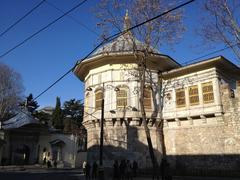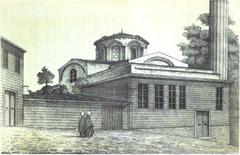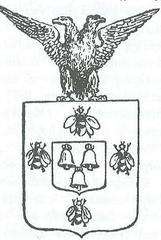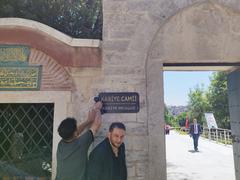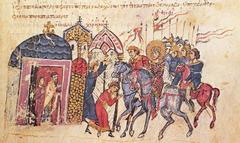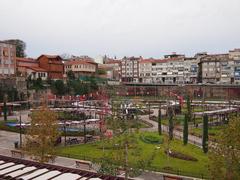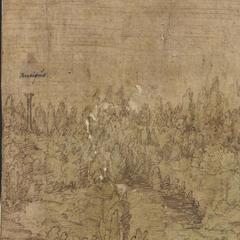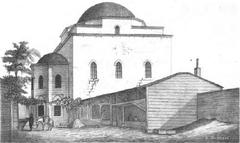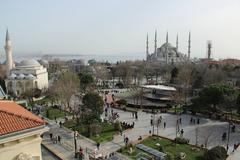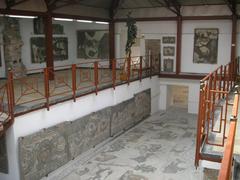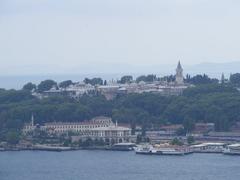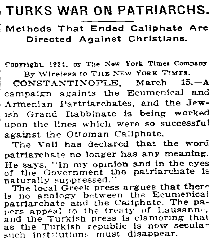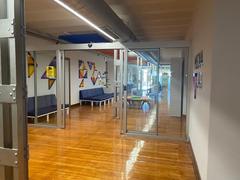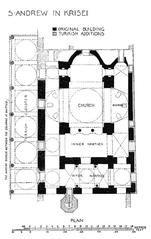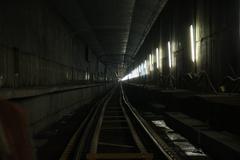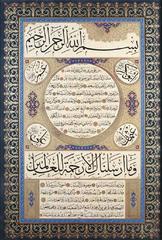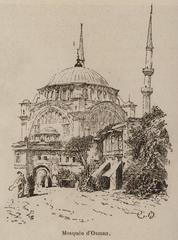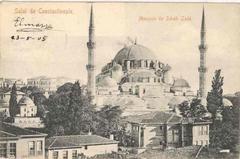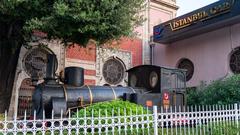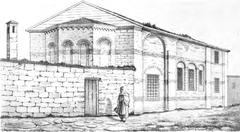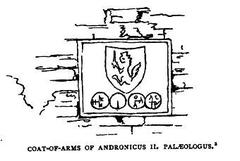Museum of Turkish Calligraphy Art: Comprehensive Visitor Guide (Fatih, Istanbul)
Date: 14/06/2025
Introduction
Situated in the heart of Istanbul’s historic Fatih district, the Museum of Turkish Calligraphy Art (Türk Vakıf Hat Sanatları Müzesi) celebrates the profound legacy of Turkish-Islamic calligraphy. Housed in the iconic Bayezid II Madrasa, the museum guides visitors through centuries of artistic and spiritual development, from early Islamic scripts to the masterpieces of the Ottoman era. This guide provides detailed information on the museum’s collections, visiting hours, ticketing, accessibility, and practical tips—making it essential reading for art lovers, history enthusiasts, and travelers alike (Istanbul Metropolitan Municipality; Turkey Big).
Museum Overview and Historical Significance
The Setting: Bayezid II Madrasa
The museum is located within the historical Bayezid II Madrasa, built between 1505 and 1507 under Sultan Bayezid II. This building served as a center of education and culture during the Ottoman era, offering a fitting backdrop for the exploration of calligraphic art. Its proximity to landmarks such as the Grand Bazaar and Sultanahmet further enriches the visitor experience (Muze.gen.tr).
The Art of Turkish Calligraphy
Turkish calligraphy, or “hat,” is deeply intertwined with the nation’s Islamic heritage. Originally rooted in the adoption of the Arabic script, calligraphy evolved through various styles—Kufic, Thuluth, Naskh, Diwani, and more—culminating in the refined forms popularized by Ottoman masters. Istanbul emerged as a global hub for calligraphy, with the sultans themselves often commissioning, practicing, and promoting this revered art form (UNESCO).
Collection Highlights
Masterpieces of Turkish and Islamic Calligraphy
The museum preserves and displays over 3,000 works, spanning from the 9th to the early 20th centuries. Notable features include:
- Illuminated Qur’anic Manuscripts: Exquisitely decorated with gold leaf and vivid colors, these works represent the pinnacle of Ottoman and Islamic book arts.
- Imperial Firmans and Edicts: Sultanic decrees bearing tughra signatures, blending authority with artistic elegance.
- Decorative Panels and Hilye-i Şerif: Scriptural and poetic texts honoring Prophet Muhammad, rendered with ornate borders and motifs.
- Student Practice Sheets & Calligrapher Tools: Displaying the rigorous process behind mastering this art (Turkey Big).
Ottoman Miniatures, Illuminations, and Decorative Arts
Complementing the calligraphic collection are Ottoman miniatures, marbled papers (ebru), and illuminated manuscripts. The museum also showcases ceremonial textiles, carpets from Hereke and Uşak, carved woodwork, engraved silver, and brassware—all adorned with calligraphic motifs (Travel Store Turkey).
Sacred Relics and Sultan’s Diaries
Rare personal artifacts, such as the diaries of Sultans Abdul Hamid II, Ahmed III, and Mahmud II, alongside the rosewood Sultanate Chair, offer insight into the personal and spiritual significance of calligraphy in Ottoman society (Turkey Big).
Exhibition Flow and Visitor Engagement
The museum’s layout takes visitors on a chronological and thematic journey:
- Early Islamic Scripts: Showcasing the evolution from Kufic to more complex styles.
- Ottoman Calligraphy: Featuring works from renowned masters like Sheikh Hamdullah and Hafız Osman.
- Tools, Materials, and Techniques: Providing context for the artistry and craftsmanship involved.
- Modern Interpretations: Featuring contemporary works and rotating exhibitions.
Interactive digital kiosks, bi-lingual interpretive panels, and occasional hands-on workshops enrich the educational value of each visit (Bazaar Turkey).
Cultural and Educational Significance
Calligraphy in Ottoman and Turkish Society
Calligraphy served not only as a spiritual and artistic pursuit but also as a tool for administration, education, and everyday life. Architectural inscriptions, religious manuscripts, and official documents all testify to its central role in shaping Ottoman identity and aesthetics.
Conservation and Heritage
The museum is committed to preserving its delicate collections through active conservation, restoration workshops, and scholarly research, ensuring the legacy of Turkish calligraphy endures for future generations (UNESCO).
Practical Visitor Information
Location & Getting There
- Address: Atatürk Bulvarı No: 38, Fatih, Istanbul
- Public Transport:
- Tram: T1 line, Beyazıt-Kapalıçarşı stop (5-minute walk)
- Metro: Vezneciler station
- Bus: Multiple city lines serve the area
- Parking: Limited; public transportation is recommended
Visiting Hours
- Tuesday to Sunday: 9:00 AM – 5:00 PM (last entry 30 minutes before closing)
- Closed: Mondays and certain public holidays
Check the official website for holiday schedules and updates (Muze.gen.tr).
Ticket Prices
- General Admission: 40 TRY
- Discounts: Available for students, seniors, and Turkish citizens
- Children: Under 12 (or 6, per current policy) free
- Museum Pass: Istanbul Museum Pass holders enter free (The Turkey Traveler)
Accessibility & Visitor Amenities
- Wheelchair Access: Improved by recent renovations; inquire in advance for specific needs
- Facilities: Restrooms, cloakroom, gift shop with books, art prints, and calligraphy-themed souvenirs
- Photography: Permitted without flash or tripods in most areas; follow posted signs and staff instructions
- Guided Tours: Available in Turkish and English; advance booking recommended for groups and workshops
Visitor Experience and Recommendations
- Plan at least 2 hours to fully explore the exhibits and participate in interactive features.
- Arrive early during peak season (April–October) to avoid crowds.
- Dress comfortably for walking and standing.
- Respect the cultural significance of the art by speaking quietly and dressing modestly, especially if visiting nearby mosques.
- Check for special exhibitions and events, which are frequently offered.
Must-See Highlights
- Works by Sheikh Hamdullah and Hafız Osman: Exemplars of Ottoman calligraphic refinement.
- Qur’anic Manuscripts: Illuminated masterpieces from the Seljuk and Ottoman eras.
- Imperial Firmans and Tughra: Stunning documents and signatures of the sultans.
- Calligrapher’s Tools: Exquisite pens, inkwells, and pen cases, some inlaid with precious materials.
Nearby Attractions
- Beyazıt Mosque: Next to the museum, an early Ottoman architectural gem.
- Grand Bazaar: One of the world’s oldest and largest covered markets.
- Sultanahmet Square: Home to the Blue Mosque, Hagia Sophia, and other major landmarks.
- Turkish and Islamic Arts Museum: Another must for Islamic art lovers (Muze.gen.tr).
Frequently Asked Questions (FAQ)
Q: What are the museum’s opening hours?
A: Tuesday to Sunday, 9:00 AM to 5:00 PM. Closed on Mondays and public holidays.
Q: How much is the admission fee?
A: General admission is 40 TRY, with discounts for students and seniors. Children under 12 usually enter free.
Q: Is the museum wheelchair accessible?
A: Renovations have improved access, but some areas may remain challenging. Contact the museum for details.
Q: Are guided tours and workshops available?
A: Yes, in Turkish and English. Advance registration is recommended.
Q: Can I take photos inside?
A: Non-flash photography is allowed in most areas; follow posted rules.
Visuals and Digital Resources
Explore high-quality images of the museum’s collections and historic architecture on the official website. Virtual and interactive tours may be available online, enhancing your planning and understanding (Turkey Big).
Summary
The Museum of Turkish Calligraphy Art is a cornerstone of Istanbul’s rich cultural landscape. Its comprehensive collections, historical setting, and engaging visitor programs offer a captivating exploration of the spiritual, artistic, and intellectual dimensions of Turkish and Islamic calligraphy. Whether you are seeking inspiration, education, or a deeper connection to Istanbul’s heritage, the museum is a must-visit destination. Stay updated on opening hours and events, and consider pairing your visit with other nearby historical attractions for a full day of discovery (Daily Sabah; UNESCO; Bazaar Turkey).
References and Further Reading
- Istanbul Metropolitan Municipality
- Turkey Big
- Muze.gen.tr
- Daily Sabah
- TRT World
- UNESCO
- Bazaar Turkey
- The Turkey Traveler
- Travel Store Turkey
